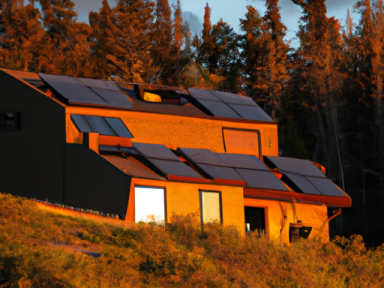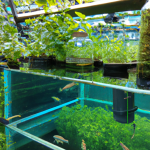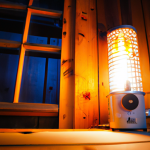
A Comprehensive Guide on Setting Up Solar Panels, Batteries, and Inverters for Off-Grid Living
Off-grid living has become increasingly popular in recent years, and for good reason. With the uncertainty surrounding our energy grid and the ever-growing threat of natural disasters, having a reliable and sustainable power source is essential. Solar power solutions offer a practical and efficient way to meet our energy needs while ensuring self-reliance and preparedness. In this comprehensive guide, we will explore everything you need to know about setting up solar panels, batteries, and inverters for off-grid living.
1. Assessing Your Energy Needs
Before diving into the world of solar power, it’s important to assess your energy needs accurately. Take stock of the appliances and devices you use daily and determine the amount of energy they consume. This step will help you determine the size and capacity of your solar power system.
2. Choosing the Right Solar Panels
Solar panels are the heart of your off-grid power system. When choosing solar panels, there are a few key factors to consider:
– **Efficiency:** Look for panels with a high efficiency rating to maximize energy production.
– **Durability:** Consider the material and build quality of the panels to ensure they can withstand the elements and last for years.
– **Warranty:** Opt for panels with an extensive warranty to protect your investment.
3. Selecting the Perfect Battery
Batteries are essential for storing the energy generated by your solar panels. Here are some factors to consider when choosing the right battery:
– **Capacity:** Determine the storage capacity you need based on your energy consumption and the number of backup days you desire.
– **Type:** Lead-acid and lithium-ion batteries are the most common types used in solar power systems. Each has its pros and cons, so research and choose the one that best suits your needs.
– **Maintenance:** Consider the maintenance requirements and lifespan of the battery before making a decision.
4. Understanding Power Inverters
Power inverters convert the direct current (DC) produced by solar panels and stored in batteries to alternating current (AC) that can power your appliances. Consider the following when selecting a power inverter:
– **Waveform:** Sine wave inverters provide clean and reliable power, making them suitable for most appliances. Modified sine wave inverters are more affordable but may not be compatible with all devices.
– **Power Output:** Calculate the peak and continuous power requirements of your appliances to choose an inverter with sufficient capacity.
– **Monitoring:** Some inverters come with built-in monitoring systems that allow you to track your energy production and consumption.
5. Installing Your Solar Power System
Installation is a crucial step that should be done by a qualified professional. Make sure to work with an experienced installer to ensure your system is set up correctly and remains safe. Additionally, consider the following:
– **Positioning:** Install your solar panels in a location that receives maximum sunlight throughout the day. Avoid shading from trees or buildings.
– **Wiring:** Properly connect the panels, batteries, and inverters following the manufacturer’s instructions or guidelines set by your installer.
– **Safety:** Adhere to all electrical safety protocols during the installation process, including proper grounding and circuit protection.
6. Maintenance and Troubleshooting
To ensure the longevity and optimal performance of your solar power system, regular maintenance is required. Here are some essential maintenance tasks:
– **Cleaning:** Periodically clean your solar panels to remove dirt and debris that may hinder their efficiency.
– **Battery Maintenance:** Follow the manufacturer’s instructions regarding battery maintenance, including checking water levels and ensuring proper ventilation.
– **Monitoring and Troubleshooting:** Keep an eye on your energy production and consumption through your inverter’s monitoring system. If you notice any issues, consult a professional to diagnose and resolve the problem.
7. Expanding Your System
Once your initial solar power system is up and running, you have the flexibility to expand it to meet growing energy needs. Whether you want to power additional appliances, install electric heating or cooling systems, or even charge an electric vehicle, consulting with a professional can help you design and expand your system efficiently.
With the right setup and proper maintenance, your solar power system can provide you with a reliable, sustainable, and resilient source of energy for off-grid living. Embrace the power of the sun and take control of your energy future today!



GIPHY App Key not set. Please check settings